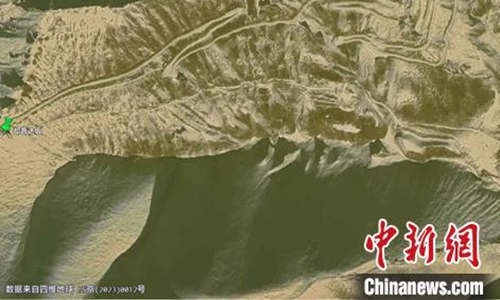ARTS / CULTURE & LEISURE
Thousand-year-old trail ruins of Silk Road discovered in Xinjiang

Photo: China News
Chinese archaeologists have discovered ancient trail ruins of the Silk Road in Northwest China's Xinjiang Uygur Autonomous Region that were recorded in ancient books, media reported on Thursday.
The ruins of the ancient trails are located in Xinjiang's Yecheng county, which once served as an important passage on the southern route of the Silk Road.
Preliminary investigations show that the trail was approximately three kilometers long, with an average width of over two meters and a maximum width of about 3.5 meters.
It was observed that the trail was constructed with a stone foundation, China News reported.
The discovered trail is a branch road leading from Yecheng county to other location which, according to the ancient book Xinjiang Gazetteer, could reach Southwest China's Xizang Autonomous Region to the east, India through the Karakoram Pass to the south, and Pamir by following the Yarkand River to the west.
Yecheng county is located in the southwestern part of Xinjiang, over 1,500 kilometers away from the capital Urumqi and 260 kilometers from Kashi. It is situated along the upper reaches of the Yarkand River.
Xinjiang boasts a diverse history which can be known from its discovered ancient ruins.
For example, the 37.6-hectare Jiaohe Ruins in Turpan can be dated back roughly to 2,300 years ago.
The Jiaohe Ruins are among the world's best-preserved, longest-lasting and biggest ruins of a clay-built city.
The city was created as a fortification atop a high cliff by excavating the ground rather than building up.
Global Times

